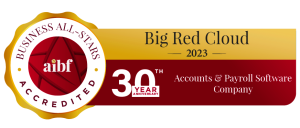Bookkeeping is a necessary part of running your business. Not only do you have to return your accounting records at the end of your financial year, but keeping your books up to date helps you stay on top of your business’ performance. With the right financial management, you can take a lot more control over the future of your business, finding opportunities for growth that might otherwise be missed.
Now, you could pay a professional bookkeeper or accountant to look after your financial records on a day-to-day basis. On the other hand, you could do it yourself.
That can be a daunting prospect for business owners who don’t have any experience with accounting. Some of the terminologies can be extremely confusing! Something we come across quite often here that can confuse small business owners doing their accounts is the nominal ledger.
In this post, we’re going to tackle the nominal ledger. What exactly is a nominal ledger? And what does a nominal ledger do? The answer, it turns out, is not that complicated.
What is a nominal ledger used for?
The most basic explanation for a nominal ledger is that it’s where you record your accounting transactions. So it’s the central source of information regarding your finances, including your profit and loss, your balance sheet and your nominal account. It’s as complete a set of accounting records as most people need.
So your nominal ledger will contain every transaction that you make a financial record of. That’s going to include both credit and cash transactions. Sounds easy, right? The problem that many people face if they don’t have a lot of accounting experience is that they’re not entirely sure how to input and record that information. How does your accounting info get into the nominal ledger?
The good news is that if you’re using accounting software, then your software will automatically take care of this for you in the background. It simply couldn’t be any easier to take control of your accounting.
How is a nominal ledger different from a general ledger?
This is another area where it looks confusing, but it’s actually straightforward. A general ledger is just another name for the nominal ledger! It is important to realise that these are one and the same to avoid getting confused by the different terms.
In order to categorise transactions, several daybooks are used on a day-to-day basis, such as the sales book, cash book or purchases book, depending on the type of transaction being recorded. Before the occurrence of accounting software, the transactions in these daybooks would be manually posted to a physical ledger: the nominal ledger.
What is a nominal ledger good for?
Your nominal ledger is where you record all of your accounting transactions. That means it will contain a record of every asset, payment and expense that your business incurs. While this is always fantastic information to have available at all times, it also has a practical application.
You can use the information presented on your nominal ledger to prepare your balance sheets and profit and loss statements. Using the information on your nominal ledger, you can then create the financial reports you need at the end of your designated accounting periods.
When properly applied, your nominal ledger can be used to make journal entries, monitor and record accruals and multiple forms of repayments, create your much-needed financial statements and even help prepare your budgets and finances for the new accounting year.
However, don’t worry if that all sounds like a lot of data entry when you could be getting on with business. Luckily, accounting software allows you to enter the transaction only once into the relevant daybook, and it will automatically update the necessary entries for the nominal ledger in the background.
That means no wasted time inputting numbers into your devices or scrawling figures into a notebook. Even the most complex accounting is now a straightforward process that will automate and autocomplete the information you need. The result is that accounting is now faster, easier and significantly more efficient while cutting down on human error.
What is nominal ledger reconciliation?
This is another accounting term that can seem like a mystery to those without accounting experience. But again, it’s a lot easier to understand than you might expect. What is nominal ledger reconciliation? It’s simply the process of ensuring that your business bank account is matching up with all of your current accounting records.
It should be fairly clear why checking your bank transactions are the same as the transactions listed on your accounting records, including your nominal ledger. Bank reconciliations are where your nominal ledger will tend to be used the most often, as it’s one of the main uses of the ledger.
By using your nominal ledger to check against your bank transactions, you make it much easier to spot anything untoward, such as cash manipulation or fraud. So your nominal ledger isn’t just great for growth insights and cash flow forecasting. It’s also a resource that can help you protect your business.
Creating nominal ledger reports
Your nominal ledger is segmented by the individual accounts that you keep, such as your sales account, purchases account, bank account etc. When you use your accounts software to produce your Profit & Loss or Balance Sheet reports, the balances of these accounts are used within those financial reports. Once again, these accounts are automatically updated in the background of most accounting software packages by the entries you create, making it easier for you to manage accounts.
So if you’re using modern accounting software, you don’t have to worry about it on a day-to-day basis. It will be working away in the background. Generally, if it is required to be used to make adjustments to your numbers or correct minor issues, your accountant will use the nominal ledger.
What is a nominal ledger? A lot more than you might have thought
It should be apparent that using a nominal ledger isn’t just interesting to do. A nominal ledger is one of your most high-value resources. It helps manage cash flow, provides insights into your finances and highlights when your finances don’t look right.
If you use Big Red Cloud accounting software, you can choose to enter transactions directly into the nominal ledger if you feel like you have the accounting experience necessary to do so. Why not take a free trial and see for yourself? Or contact the team at Big Red Cloud today to learn more about how we can help you turn your accounting into a resource to drive growth.





2 Comments